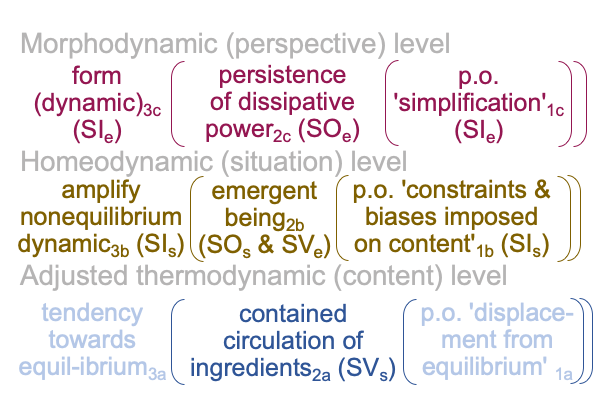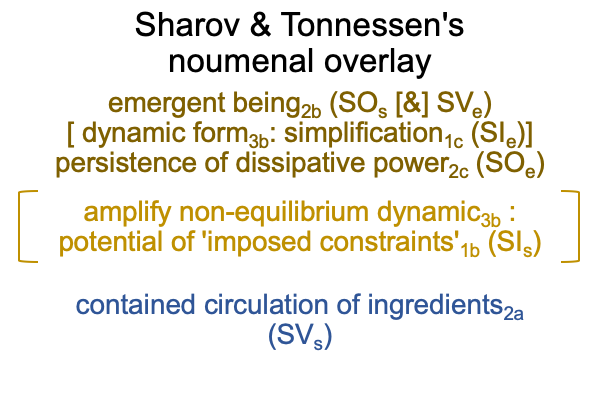0299 Here is a three-level interscope for emergence, with the specifying and exemplar sign-relations noted.

0300 Emergence enters into S&T’s noumenal overlay.
Here are the results.

0301 When Sharov and Tonnessen confront the origin of life on Earth in chapter five of Semiotic Agency, associations with Mariusz Tabaczek’s formulation of emergence are not apparent. The focus on inquiry is on chemical self-replication rather than structures that capture thermodynamic energy2a through an emergent2b then dissipate the emergent’s energy2cby building a persistent structure.
The eukaryotic cell’s metabolism of glucose and oxygen works by extracting energy released in the combustion of these reagents.
In combustion, oxygen gas directly takes electrons from glucose, without any homeodynamics. Covalent bonds are broken. Covalent bonds form. Lots of free-energy is released and converted into heat.
In the eukaryotic cell, electrons produced by the oxidation of glucose (at one cellular location) are used to produce an emergent being, such as ATP, before going into the reduction of oxygen (at another cellular location), where more ATP is produced. ATP2b is the emergent being, whose energy is dissipated on the morphodynamic level.
0302 So, where is a scientist supposed to start, when considering abiogenesis?
Researchers into the origins of life focus on the formation of covalent bonds that constitute polymers. Polymeric molecules are persistent structures. But, scientists have not identified an emergent, similar to ATP, whose concentration is low yet constant, because it is produced on the homeodynamic level and used up on the morphodynamic level. Nor have researchers identified any thermodynamic processes amenable to exploitation by a homeodynamic level.
